|
Adopted by the CDC .in their Antimicrobial Resistance Laboratory Network based on our prior publications in Journal of Clinical Microbiology, Journal of Antimicrobial Chemotherapy, and Antimicrobial Agents and Chemotherapy for testing of aztreonam/ceftazidime-avibactam combination activity using inkjet printing. We provide a step by step video demonstration of assay setup in the Journal of Visualized Experimentation. Link to article landing page (PDF protocol access and video), "Antimicrobial Synergy Testing by the Inkjet Printer-assisted Automated Checkerboard Array and the Manual Time-kill Method" by Thea Brennan-Krohn and James E. Kirby.
1 Comment
"New Treatment Options against Carbapenem-Resistant Acinetobacter baumannii Infections" cites our murine apramycin PK/PD studies and activity spectrum studies against "CRAB.".
These cacti display dichotomous acute angle branching reminiscent of Aspergillus forms in clinical specimens. Photographed in Red Rock Canyon, Nevada.
New antibiotics that may offer additional and much needed treatment options will only be used in hospital systems if the clinical microbiology laboratory can provide timely antimicrobial susceptibility testing data. Historically there has been a time lag in the availability of susceptibility testing methods either at reference laboratories (long delay to results), incorporation in automated commercial systems (4 years), or simpler methods like disk diffusion and gradient strips that can be performed manually on an as needed basis. I was excited to learn that delafloxacin and meropenem/vaborbactam disk diffusion and gradient strip methods finally became available. Fantastic. However, before we can introduce those methods in the clinical laboratory, we need to validate performance of these methods per CLIA '88 regulations and good laboratory practice. This requires either comparing the new methods to a reference standard (broth microdilution -- need antibiotic powder, and a lot of set up time) or a set of strains that has been previously characterized by a reference dilution method and has a good representation of susceptible and resistant isolates. Those are serious roadblocks. By chance, I happened to give a talk at the Northeast Branch of the American Society of Microbiology and a someone from Melinta Pharmaceuticals happened to be there, and that someone referred me to our local Key Account Manager who offerred a solution "on request". Specifically, Melinta or other pharmaceutical companies are not allowed to approach me and tell me about a solution, but if I inquire independently and ask for a previously characterized set of bacterial isolates, they are allowed to tell me that in fact they have a series of previously characterized isolates for both drugs available for validation. These isolates are provided free of charge from Laboratory Specialist, Inc, Sent by FEDEX with first class documentation, data for broth microdilution performed circa ten times on each isolates with modal MICs and MIC distribution - wow, that is awesome. Methods validated beautifully. It just seems odd to me that such a valuable resource, providing clinical laboratories the ability to robustly evaluate AST methods for newly marketed drugs, needs to remain on a need to know basis. Clinical labs, please take note of this available resource. The same proved to be true for plazomicin. Achaogen uses the same Laboratory Specialists, Inc. to provide 30 characterized isolates on request; however, the FEDEX chargers are not absorbed. The FDA-CDC Biobank also now has a set of isolates characterized for plazomicin susceptibility and I see now also delafloxacin., I suspect the exact same set of organisms. The existing rule restricting such company-clinical laboratory communication about these important resources should be relaxed! We need facile access to validation strains sets to bring new testing into our laboratories in a timely fashion, to facilitate the availability of new antibiotics when they are most needed, and to help support profitability of antibiotic development by pharmaceutical companies.
Winogradsky column and examples of soil bacterial from visiting exhibit on microbial life at Harvard Museum of Natural History. Great exhibit!
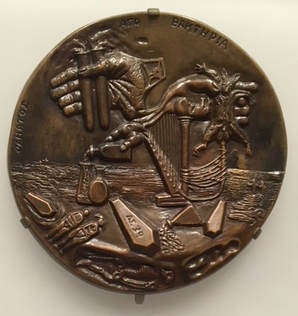 Reflections on bacterial pestilence in pre-antibiotic era. Displayed at Harvard University Art Museums Superbugs: An Arms Race Against Bacteria by William Hall, Anthony McDonnell and Jim O'Neill6/15/2018 A thoroughly enjoyable book on the history of antimicrobials. A big thanks to Thea for recommending!
|
Kirby Lab Blog Categories
All
Archives
July 2024
|



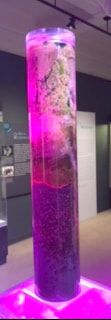
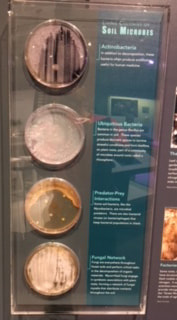
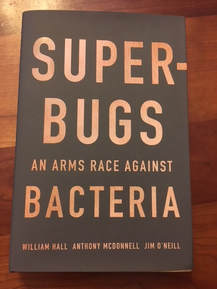
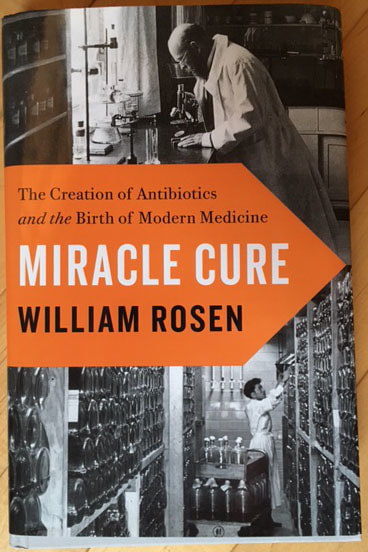
 RSS Feed
RSS Feed